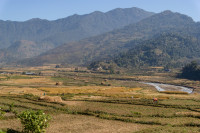Opinion
Economy of tomorrow
Growth that is resilient and socially just can be best realised through an information management system of resources
Saroj Dhakal
National interests drive international relations just as national assets drive the global economy. Hence, an analysis of national assets is the backbone of developing a foundation for a national economy to fully engage with the global economy. Nepal's natural resources—its topographic uniqueness ranging from 70km to 8,848km in a width around 131km, length around 1,310km, with 6,000 rivers and streams originating from the 'third pole', sunshine for 333 days a year (an average 5 hours a day), wind in the gorges and tops of our mountains and hills, natural gas, valued minerals and rocks—is a theme that echoes in tea shops, high-end seminars and innumerable development reports.
This article speaks of the need for the development of a database in Nepal via an information management system to clearly evaluate these national assets to unleash the development of Nepal in a sustainable fashion. Such a database would promote sustainable development via targeted investments while also providing valuable insight on the perils of climate change on local resources such as water, flora, fauna and agriculture to develop a climate resilient society at the local and national level. This database would also help provide a strategy for the conservation of nature.
Developing an integrated database
The most important requirement in unleashing Nepal's economic potential more rapidly is to provide data on what natural resources are available for systematic investment, both national and global. For inclusive growth, data must to be collected and mapped to Nepal's existing 3,633 VDCs and 130 municipalities. This involves monitoring data on water quality and quantity, pollution, sunlight, wind, flora, and fauna along with meteorological information with the purpose of monitoring, managing and analyzing the collected information both at the local as well as national levels. Images of objects, scientific names, along with cultivation or lifecycle can be provided to the public through web-based portals and mobile applications.
In the meantime, collecting wind data from a height of 35-50m, water flow variation, solar radiation, air density and other meteorological information can be embedded within the existing information management system of the locality to promote and speed up the process of development of small and large-scale electric utility companies for commercialisation, value addition and a productivity boost. The system to be created is an information system of local resources, interlinked with information on renewable energy possibilities, along with credible micro-climatic information.
Applicability of data
One of the possible reasons for dismal investment in large-scale renewable energy projects in Nepal is the cost of collecting credible data, which is the foundation for any project design. If cheaper technology came into play for data collection on credible surface solar, wind and water, then it can help the private sector make a realistic assessment of resources, profits, technology, project development and management along with growth potential.
Let us take an example of Ilam and its famous tea. My previous company, WindPower Nepal, was trying to add value to tea using wind energy. However, the lack of credible data on wind made it impossible to predict our rate of returns once the value was added. The same applies to Jumla's apples. If credible data on sources of renewable energy—be they hydro, wind or solar—was available, along with what products are found in the local community, it would have been a quick process for the private sector to not only produce agro and other goods but also rapidly start to add value in collaboration with the local community or cooperatives, creating jobs, incomes and additional profits for stakeholders.
Data on flora and fauna can help launch small businesses such as nurseries, while also creating a major business for urban beautification. The presence of almost five ecological zones in Nepal creates the potential for a diversity of agro-ecological zones with the possibility of production, diversification, value-addition and commercialisation of agro-products and other local resources. This process would use renewable energy to help establish an 'economy of tomorrow' that is socially just, resilient and is primarily driven by the greening of the old economy via innovation. Additionally, local populations can be made aware of the benefits of data so they have better negotiation powers with investors and venture capitalists.
Data and climate change
The availability of water data and meteorological information is a beneficial investment, as power, food-security, urban infrastructure rely on a fresh water source. On a macro level, it might also add an important contribution to fighting climate change, as set out by UN Framework Convention on Climate Change. In 2009, the Copenhagen Accord—which was not formally adopted—contained an explicit reference to limiting temperature rise to under 2°C; at the 2010 Cancun Summit, the temperature limit was officially accepted.
Credible data on water flow could be a great asset to correlate this 2°C target, greenhouse gas levels, glacier melt and fresh water supply. Regular data provisions can provide an incredible opportunity to properly assess the impact of climate change along with disaster prevention strategies on fresh water stress, which has the potential, as argued by some political scientists, to be a major cause for war in the future. Climatic information, along with information on flora and fauna, can help us understand micro-climatic conditions and their impacts on local resources over time.
The scale and volume of work, along with the innovation needed, may sound cumbersome. Furthermore, the classified nature of water data can make the work difficult for private sectors. However, this work can have lasting value on multiple fronts for a sustainable economy as it can directly provide green entrepreneurs with possibilities for innovation. It can provide information for small to large investors, inform locals on climate change and spur innovation. In simple words, an information mechanism will benefit green entrepreneurs and local stakeholders for micro, medium to large-scale projects in various sectors—energy, tourism, agriculture, logistics and water-related industries.
This data system could act as a kind of internet for nature to help unleash innovation among local bodies, the government, researchers, green entrepreneurs and investors in the same way the web has been valuable in growth.
Dhakal is the President of 8848 Inc




 15.12°C Kathmandu
15.12°C Kathmandu










